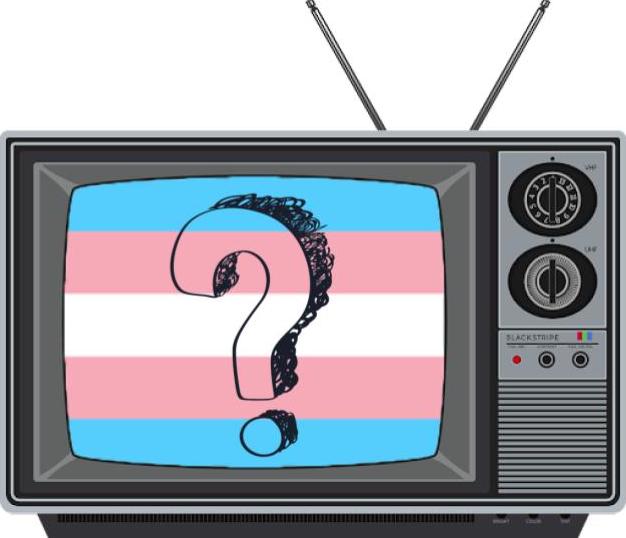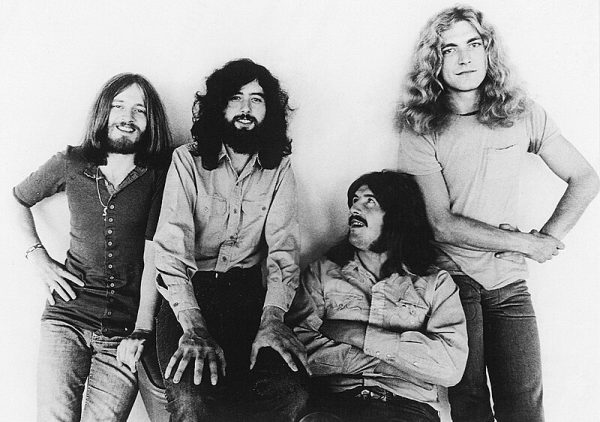Transmascs in Media: The Good, the Bad, and the Non-Existent
I’ve noticed a concerning lack of representation in the media I consume, especially for trans men and other trans-masculine individuals. We seem to have made strides with representation for L, G, and B characters, but a lot of shows and movies leave out the T. Plus, on the off chance that a piece of media DOES have a trans character, they’re often one-sided stereotypes or othered by the rest of the cast. This is an issue that needs to be resolved. In this article, I will be specifically focusing on representation for trans men, as that’s where I have personal experience. I’m not a trans woman, so I can’t really give my thoughts on the accuracy of their representation.
Accurate trans representation is important because, for many people, their only exposure to the trans community is through the media. What we see shapes our feelings and opinions, so misinformation and negative portrayals can cause misunderstanding, and misunderstanding can breed bigotry and hate. As stated in a 2013 thesis paper by Jessie Jobe, “The way groups of people are represented in the media can be both reflective of and influential on society’s (possibly stereotypical) perceptions of these groups…As a whole, the transgender community faces a lot of prejudice in American society, and current transgender representation in the media has the power to reinforce negative stereotypes.”
Due to this lack of representation, many people may not fully understand the terminology I’ll be using in this article, so it seems relevant to have some definitions. A trans man or transmasculine person is someone who was born biologically female but identifies as male or something other than female. A trans woman is the same but reversed. A non-binary person is someone who doesn’t identify as male or female. They usually use they/them pronouns but may use others that make them more comfortable. Some trans people chose to receive hormone therapy, sometimes abbreviated as HRT, to go through a puberty-like process to make their body match their identity. Trans men should be referred to as men and trans women as women.
According to GLAAD’s 2020 Where We Are On TV report, “Of the 360 total regular and recurring LGBTQ characters on scripted primetime broadcast, cable, and streaming originals, 29, or 8 percent of those LGBTQ characters, are transgender…Of the 29 characters counted in this year’s report, 15 are transgender women, 12 are transgender men, and two are non-binary transgender characters.” This is a large difference from their 2017 report, which reported only 17 recurring characters, or 5% of total LGBTQ characters, were transgender. Of these 17 characters, 9 were trans women, 4 were trans men, and 4 were non-binary. Clearly, there has been a growth in trans representation, but there is still a definite lack in comparison to other types of characters, LGBTQ or not.
As shown in GLAAD’s study, trans women tend to have more representation than trans men. This introduces a new question. Does this reflect reality? Are there more trans women in the world than trans men? Well, there’s a significant lack of information on this topic. The only data I could find on this was from Pubmed’s National Library of Medicine, which only surveyed people receiving hormone therapy, which is just a percentage of the trans population. This survey showed that over the past years, trans women have repeatedly outnumbered trans men. However, the population of trans men has been steadily growing, and as of this survey’s publishing in 2020, the groups are about equal. Unfortunately, no exact numbers or percentages are given, so I cannot say for certain if this is the case.
Now that we’ve explored some of the statistics, I want to understand what makes a good trans character. Keep in mind that these are only my opinions and others may disagree. I encourage you to think critically about the media you consume and don’t just take my thoughts at face value. All that being said, I think the main characteristics of a good trans character are as follows:
1. The character is played by a trans actor and/or is written by a trans person. This goes for any minority group. Without the input of the person you’re trying to portray, you risk falling into stereotypes and inaccuracies.
2. The character is three-dimensional. This means that there is more to them than their identity. It’s perfectly fine for their gender to come up in the story occasionally, but they should be independent characters with traits, relationships, and plot points outside of their identity.
3. The character isn’t built on suffering. There’s been a trend in the past where characters considered “deviant” in some way were only allowed to exist if they were punished in the end. This has existed since the Hays Code, introduced in 1930 and abolished in 1968, though still having effects to this day. The code was supposed to be a moral guide for media, outlawing topics such as violence, nudity, and “sexual perversion” which included LGBTQ people. In many cases, people continued to portray LGBTQ people in their stories, but mostly as villains or people who are “punished” at the end of the story. Though the Hays code is no longer in place, queer and transcoded villains are still fairly common, as are stories specifically focused on our suffering. These types of stories have their place, as many trans people do have negative experiences in life, but I don’t always want to watch a story where someone like me is hurt over and over again.
I think a good summary of these characteristics was given in a Slate article by trans woman Jae Alexis Lee. She states, “When I think about transgender characters in media, one of the things that we discuss so often is that the overwhelming majority of trans characters are portrayed negatively, heaped in negative stereotype or sunk deep into transition stories that serve as little more than a lens for the cisgender audience to view a portion of what trans people experience on their journeys. Even then, positive depictions of trans characters are often forced into narrow roles where the whole of their story is about the transition or the character is intended to build audience attachment just before killing the character for dramatic effect.”
To give an example, a transmasculine character that I found to be pretty accurate was that of Theo Putnam from Netflix’s The Chilling Adventures of Sabrina, played by Lachlan Watson. The show serves as a darker reboot of the 90s sitcom, Sabrina the Teenage Witch. We follow the titular character Sabrina Spellman as well as several friends and supporting characters as she explores life as, well, a teenage witch. I watched this show when it was airing from 2018 to 2020, as I grew up watching the original show and the cartoons that followed it. There are many aspects of the reboot to criticize, but one part of it I ended up really liking was the character of Theo. Theo is one of Sabrina’s close human friends and appears in most episodes. Throughout the first two seasons, we get to watch as he discovers his identity and begins to transition, changing his name, cutting his hair, etc. I very much related to Theo and I personally feel that he provides decent representation. The show also makes a point of validating his identity. For example, in an episode of season 3, Theo is possessed by a demon that only possesses men. This could be considered a bit forced, but it’s only mentioned a few times and overall I think it’s a decent plot point.
There are definitely aspects of this storyline to criticize, like how rushed it is and how heavy-handed the themes can be. For example, in season 2 Theo tries out for the boy’s basketball team and experiences some resistance, but everything is resolved by the end of the episode. As far as I can remember, this is the only time that Theo experiences transphobia, which seems somewhat unrealistic. However, it is refreshing to see a trans character whose story isn’t focused on suffering. I’m willing to suspend my disbelief in this aspect for the sake of the story. Some of the dialogue is also rather clunky and awkward. One example that comes to mind is a scene in season three where Theo is telling his partner that he’s transgender. The scene isn’t bad, but I found it a bit poorly written.

One of the main reasons this character provides good representation is due to the actor, Lachlan Watson. Watson, themself is trans and provided plenty of input on the character. They have stated in interviews that Theo is based partly on a version of themself from a few years ago. According to an article by LGBTQ news outlet Them, Theo’s story was originally much shorter. Showrunner Roberto Aguirre-Sacasa planned for Theo to come out as trans very abruptly, then have him killed off just a few episodes later. Watson convinced Aguirre-Sacasa to put more thought into Theo’s storyline, resulting in Theo surviving the show and having a much better arc throughout the show. They also had input in casting and writing Theo’s love interest, Robin. Overall, having a trans actor actually play a trans character made a huge difference in this portrayal.
To conclude, trans representation is a category that is very much lacking. Throughout the years it has been pushed aside and considered unimportant. We live in a more inclusive and diverse world, and our media should reflect that. It is up to us as the future generation of actors, writers, and directors to make this change happen so that everyone can see themselves on screen.





